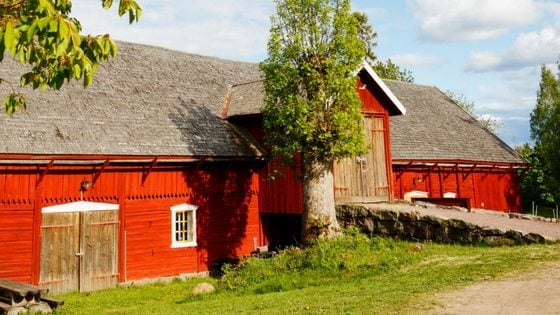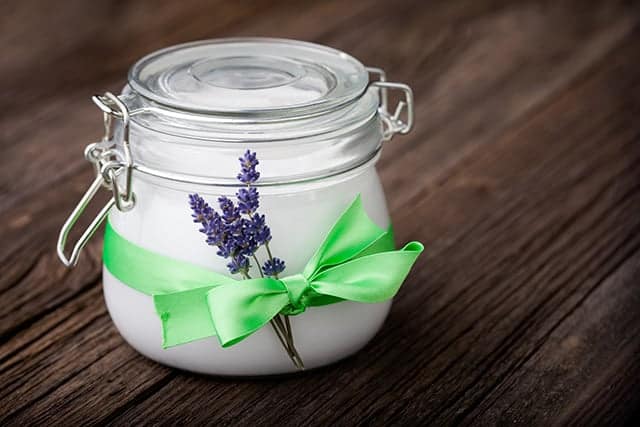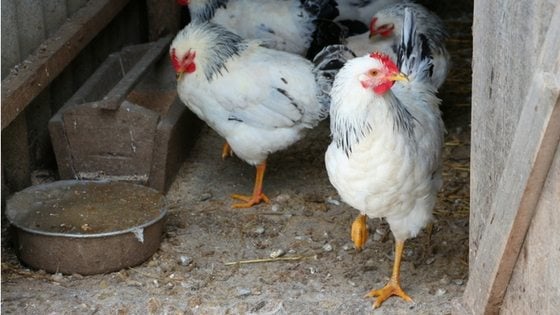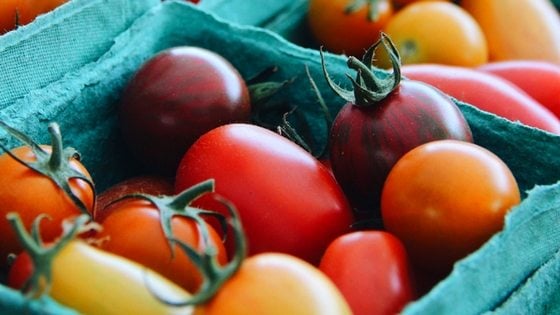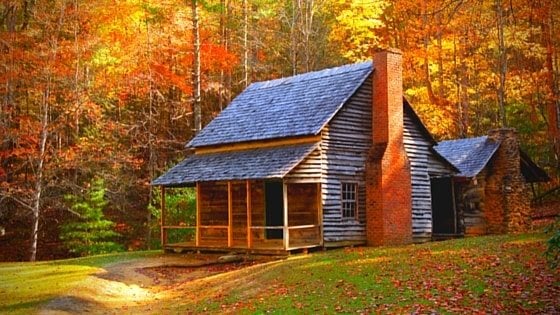Wondering what vegetables grow in the shade? No matter where you might live, it can be tough to find the optimal conditions for growing vegetables.
From shade produced by nearby buildings to hefty tree limbs that block out the afternoon sun, finding a garden plot with the perfect amount of sunlight your plants need can be a challenge. However, you don’t need to move mountains in order to grow a productive garden.
Instead, you just need to consider these vegetables that grow in shade.
What is Considered “Shade”?
There are essentially three different sunlight settings that can describe how much light your plants will get during the growing season.
Full sun refers to areas that receive direct sunlight for a minimum of six hours each day. Usually, this will be sometime between the hours of 10 am and 6pm.
Partial shade, on the other hand, refers to areas that receive three to six hours of sun each day. This can include areas of filtered or dappled sunlight, even if it’s just during a short window each day.
Full shade areas receive no direct sun or even any reflected light during the day. It can be pretty tricky to grow any kind of vegetable in full shade (after all, every plant needs light to grow)- as a result, most of the plants we will recommend in this article should be considered for partial shade instead.
Top 20 Vegetables That Grow in Shade
When you’re looking for the best vegetables to grow in the shade, you will want to consider plants like leafy greens (which are sensitive to the sun) and root vegetables, that can tolerate some partial shade as well.
Here are some of the top vegetables that grow in shade.
Beans
Beans require very little work to grow, which is probably why they are found in just about every gardener’s plot. In addition, they grow well with moderate amounts of daily shade. With so many different types of beans to choose from, they’re a smart choice for your shade garden for sure.
Arugula
One of the fastest-growing leafy greens, arugula is a great option for your backyard shade garden. Although not everyone will be fond of arugula’s musky, peppery taste, it can’t be argued that it performs exceptionally well when grown in partial shade.
Broccoli
Broccoli loves being grown in lots of shade. A member of the cabbage family, it really only requires a few hours of sunlight each day along with plenty of water. In some places, you might be able to sneak in multiple crops throughout the growing season, too – just make sure you trim back the flowers so the plant doesn’t bolt on you.
Beets
Beets are one of the best cold-hardy crops you can grow, but they are also one of the best vegetables that grow in shade for you to consider, too. Although too much shade can cause your beetroots to become a bit tiny, the greens will still produce remarkably well. Plant beets in succession for a continual harvest and make sure you keep them well-watered!
Brussels Sprouts
Brussels sprouts – you either love them or you hate them. These plants are fun to watch as they mature and they will do so quite well even in the shade. Brussels sprouts grow well into the cold season and actually prefer being grown in cooler weather.
Spinach
Spinach can be grown with just a few hours of sunlight each day. Because it is a cold-loving plant, it even grows well in the waning daylight hours of fall and spring. NOt only is spinach an excellent salad green, but it can be used in a variety of cooked recipes, too. If you start planting early, you can plant in succession for a crop all season long.
Swiss Chard
Swiss Chard is a colorful beauty for you to consider in your backyard shade garden. Preferring partial shade, this plant is biennial – you can overwinter it to grow it a second year. Chard is easy to grow and requires minimal maintenance, making it perfect for the inexperienced gardener.
Kale
Kale is another superb candidate for your shade garden. Closely related to cabbage, this plant can also be grown in a container and likes cool soil temperatures and lots of shade. It can even handle a light frost!
Collard Greens
Yet another cabbage relative on this list is collard greens. This plant tastes delicious sauteed as well as in a salad. Collard greens require at least four hour of sun each day, so if you have a shadier garden that receives a bit of dappled sunlight every now and then, you’re in luck. This plant also performs well in cold climates.
Cauliflower
A very close relative to broccoli, cauliflower also grows well in the shade. It can tolerate a ton of cold and shade. Delicious cooked and fresh, cauliflower should be blanched if you want it to have a sweeter taste.
Cress
Also known as garden cress, cress is a rare vegetable that many gardeners overlook when they are considering the major vegetables that grow in shade. However, this is a great option for you to consider if you want another leafy green to dd to the dinner table. Not only does it mature with lightning speeds, but it can also be grown in moist soil and is known for its peppery flavor.
Mustard Greens
Move over, spinach and kale. Here’s a new leafy green to consider growing in the shade. Mustard greens can be grown either in full sun or in partial shade, but since they prefer cooler temperatures, you might want to grow them in the shade.
Peas
Peas do quite well in a partially shady location, primarily because they like being cool. However your timing will be important – you need to make sure you sow your seeds and can get a harvest before it gets too hot.
Endive
Endives perform remarkably well with only a few hours of sunlight each day. This is specifically true if you are growing the plant during the hottest days of the summer – offering shade will prevent the plant from bolting too soon. It can also be grown in a pot!
Lettuce
Lettuce is truly a gardener’s staple and is a cool-season green that grows well in partial shade. You can grow it in almost complete shade, too – some gardeners even use shade cloth to prevent it from becoming signed in the summer sun.
Radishes
The humble radish is one of the best vegetables to grow in the shade. Not only does it take up very little space, but it doesn’t like a lot of sun or heat – in fact, it will taste woody if you give it too much sun.
Not only do radishes taste great on their own (and there are so many varieties!) the tops can be eaten, too. Radishes can be grown in the fall and the spring and there are plenty of possibilities and varieties for you to grow.
Bok Choy
Also known as Chinese cabbage, bok choy is perfect in soups and salads. It can be grown easily in dappled sunlight or even more serious shade. It requires just two hours of sunlight each day to maintain its deep green leaves.
Green Onions
You might also hear green onions referred to as scallions. These plants grow quickly and are hardy to most conditions. They can be sprouted by soaking the roots in a container of water before transplanting them to partial shade. Delicious in a salad or cooked dish, green onions can sometimes be grown as perennial shade crops, too.
Carrots
Another root vegetable that grows well in the shade is the mighty carrot. Carrots can handle partial shade with grace – if you can provide your carrots with six or more hours of sunlight, they will grow more rapidly, but you can also grow them in the shade. You just might have to wait a bit longer!
Potatoes
Potatoes need at least five hours of sunlight if you want large tubers. However, if you have a shadier spot, feel free to give them a try – you might end up with great boiling potato at the very least! They don’t, however, n eed super hot weather to grow – potatoes prefer soil temperatures in the 40s and 50s.
Tips for Growing Vegetables in the Shade
Invest in Your Soil
The key to growing healthy vegetables, but particularly vegetables that grow in shade, is making sure you have good soil that can actually support plant life. If you are already going to be challenging your crop to grow with minimal sun, it’s super important that your plants have fertile soil that is well-draining and not compacted. Add some compost to help improve your structure and soil fertility.
Moderate Moisture
Don’t water your shade garden like you would water a garden in full sun! Moisture won’t evaporate as quickly, so you won’t need to water your garden quite as frequently. If it’s near trees, however, you will need to water a bit more since your vegetables will be competing with the trees for water.
Keep an Eye Out For Pests
Certain pests are opportunistic little buggers and will seize any opportunity they can get to attack your plants. Shady areas also tend to be a bit cooler and isolated, making them the perfect habitat for shade-loving (but crop-destroying) creatures like snails and slugs.
Prevent Diseases
Just as you will need to monitor the moisture levels in your vegetable garden in the shade, you will also need to be mindful of moisture. You are more likely to suffer from various fungal diseases like powdery mildew, when you are gardening in the shade because your plants won’t have as much opportunity to rid themselves of excess moisture.
Think About Maturation Times
There are plenty of vegetables that grow in the shade, but it’s important to remember that they won’t grow exactly like their sun-loving counterparts. You may find that your plants take a bit longer to mature than what you see noted on the seed packet.
Start Your Seedlings Indoors
Starting seeds ahead of time indoors is a great way to give them a jump start before they need to be in the shade. You can start your own transplants and plant them whenever the ground has warmed.
Plant in Succession
Not sure how well your shade garden is going to perform, or concerned that your plants will take longer to mature? Don’t worry. All you need to do is plant succession. This will allow you to reap multiple harvests of the same crop despite the delays related to the shade.
Grow the Right Plants
Don’t try to grow plants that are adapted to full sun conditions when you only have partial sun available where you’re trying to garden. Crops that demand lots of light, such as blossoming plants like tomatoes and peppers, will not do well in a shady environment no matter how much you build up your soil ahead of time.
Modify Your Environment
Consider pruning low tree branches or thinning out tall limbs to let more sunlight pour into your garden. You can also paint nearby surfaces white to reflect more light back onto your garden. You can also use a reflective mulch to serve this purpose.
Grow in Containers
Growing in containers is a great way to accommodate for an overly shady garden. Not only will you be able to move your plants as the seasons change, but you can bring them inside once the weather cools, too.
Why You Should Consider These Vegetables That Grow in Shade
If you have a shady garden and think you can’t successfully grow vegetables, think again. A partially shaded garden not only allows for a longer growing season for cool-season crops (like broccoli) but the shade can also protect your plants from the hot rays of the summer sun.
Shade-grown vegetables also taste better. They tend to be more succulent and less bitter, since they haven’t had to spend all of their energy staying cool.
Consider these tips and order your seeds . There are plenty of vegetables that grow in the shade – and now that you’re no longer in the dark, you should start planting as soon as possible.
Maat van Uitert is a backyard chicken and sustainable living expert. She is also the author of Chickens: Naturally Raising A Sustainable Flock, which was a best seller in it’s Amazon category. Maat has been featured on NBC, CBS, AOL Finance, Community Chickens, the Huffington Post, Chickens magazine, Backyard Poultry, and Countryside Magazine. She lives on her farm in Southeast Missouri with her husband, two children, and about a million chickens and ducks. You can follow Maat on Facebook here and Instagram here.

